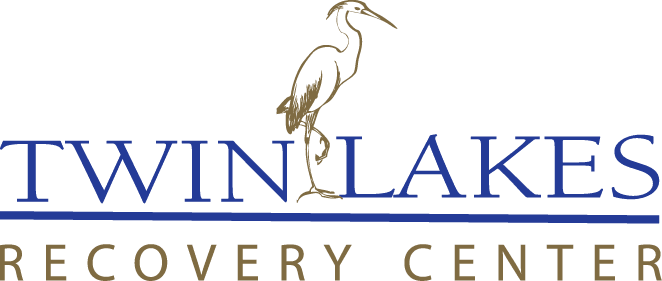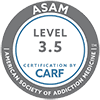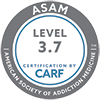 Just as there’s not one method of addiction recovery treatment that fits every person, the best option for post-residential support also differs between individuals.
Just as there’s not one method of addiction recovery treatment that fits every person, the best option for post-residential support also differs between individuals.
After inpatient or intensive outpatient treatment, many people are able to reinforce their recovery with support networks found through sober living communities, extended care programs, and 12-Step meetings. These and other components of a continuing care plan established after treatment are designed to help individuals evolve into a new state of being.
For some people, symptoms of addiction don’t fully subside until one or two years after rehab. It’s crucial to have systems in place that help them deal with cravings, triggers, and negative environmental factors to maintain strength and focus of purpose.
For decades, one reliable course of external support included 12-Step meeting programs such as Alcoholics Anonymous, Narcotics Anonymous, and similar organizations geared to accommodate other substance abuse, behavioral, and compulsivity disorders. Designed to provide community and accountability, the 12-Step approach often provides many people with a stable direction to avoid relapse. Another choice gaining popularity is SMART Recovery.
What Is the SMART Recovery Program?
SMART is an acronym that means Self-Management and Recovery Training. Founded in 1994 by a team of mental health experts, the program provides services for individuals in recovery from substance abuse.
Principles of SMART are based on guidelines established through abstinence as well as cognitive-behavioral psychotherapy. This therapy, referred to as Rational Emotive Behavior Therapy, or REBT, helps individuals change emotional reactions and belief systems as means to alter actions that may trigger self-destructive behaviors, including those associated with substance use disorder and other process disorders.
Psychologist Albert Ellis pioneered REBT in the late 1950s to help clients address irrational beliefs and the resulting actions involving them. It’s a form of empowerment: once you understand your perception of events or circumstances, you work through the emotions that once triggered unwanted or damaging behaviors.
The program’s approach is approved by organizations such as the National Institute on Alcohol Abuse and Alcoholism, the National Institute on Drug Abuse, and the American Academy of Family Physicians.
In SMART Recovery, people use REBT through a four-point program:
- Construct and maintain motivation to abstain
- Deal with urges
- Handle thoughts and feelings through effective action
- Create a balanced life
Participants consider the past as a learning tool, not as a constant point of reference for addiction. The goal is to take ownership of current emotions and behaviors to change them for the better.
SMART Recovery doesn’t encourage participants to admit powerlessness over addiction. Instead, it shifts what’s known as the “locus of control” and enables them to believe they have power over their choices. The program also doesn’t necessarily emphasize the scientific concept that addiction is a disease, but proponents state the principles work whether or not someone believes that. In addition, the system refuses labels such as alcoholic or addict.
Often one of the most controversial points of a 12-Step program is the acknowledgement of a higher power. The SMART program is secular in nature, but inclusive. Many people who use the 12-Steps for guidance can also incorporate the principles of SMART in their recovery plans.
SMART Recovery Stages of Change
The program ushers people through six stages of change based on concepts from the book, Changing for Good by James Prochaska. Here’s a snapshot of the approach:
- Pre-contemplation: Someone doesn’t know of the behavioral problems or isn’t interested in change.
- Contemplation: Now aware of potential problems, an individual may desire change but might not be confident or committed to it.
- Preparation: The person accepts responsibility for behavioral changes and develops a plan to do so.
- Action: The process of change is self-directed as the individual becomes more aware and can overcome unwanted behavior.
- Maintenance: An individual establishes new patterns and aspects of self-control for a period of time, but is cognizant of high-risk situations.
- Graduation/Exit: The participant is now consistently confident, in control, and reflects new beliefs and behaviors that enable a healthier, more progressive lifestyle.
Another philosophical difference between a 12-Step program and SMART is whether or not someone eventually recovers from addiction. Part of a 12-Step structure includes the concept of avoiding relapse “one day at a time,” and that someone is perpetually “in recovery.” SMART Recovery concepts aim to help participants move beyond addiction and be “recovered.”
Other Aspects of SMART Recovery
People often explore SMART as an alternative to a 12-Step approach for other reasons.
- The opportunity to learn from others. While SMART meetings may be led by people who suffered from addiction, they can also be hosted by therapists or counselors. In addition, these meetings encourage people to talk with one another—often referred to as cross-talk—as an essential part of the empowerment process. A facilitator may use this open forum to direct the course of the meeting based on an individual’s issue or request.
- No sponsor. The SMART process doesn’t require newcomers to work with a sponsor. People are available for assistance and support, but there’s no assignment of a sponsor. Some people may prefer this as a way to work on individual accountability.
- Online options. Similar to 12-Step meetings, SMART Recovery groups are open to the public, but there’s also an online option. Meetings typically last 60-90 minutes. They’re free to attend, but donations to the program are requested at the end of every session.
Visit the SMART Recovery website to learn more about the program.
Create a Continuum of Care Plan After Treatment
Remember: a peer support group can’t replace professional addiction treatment. Medical detoxification, recovery support, behavioral therapy, and family programs are all primary components for initial sobriety.
Once established, participants in residential rehabilitation or outpatient services often have access to peer support groups to continue their journey of wellness. Talk with your counselor during the development of your continuum of care plan to determine what programs may fit your needs.



